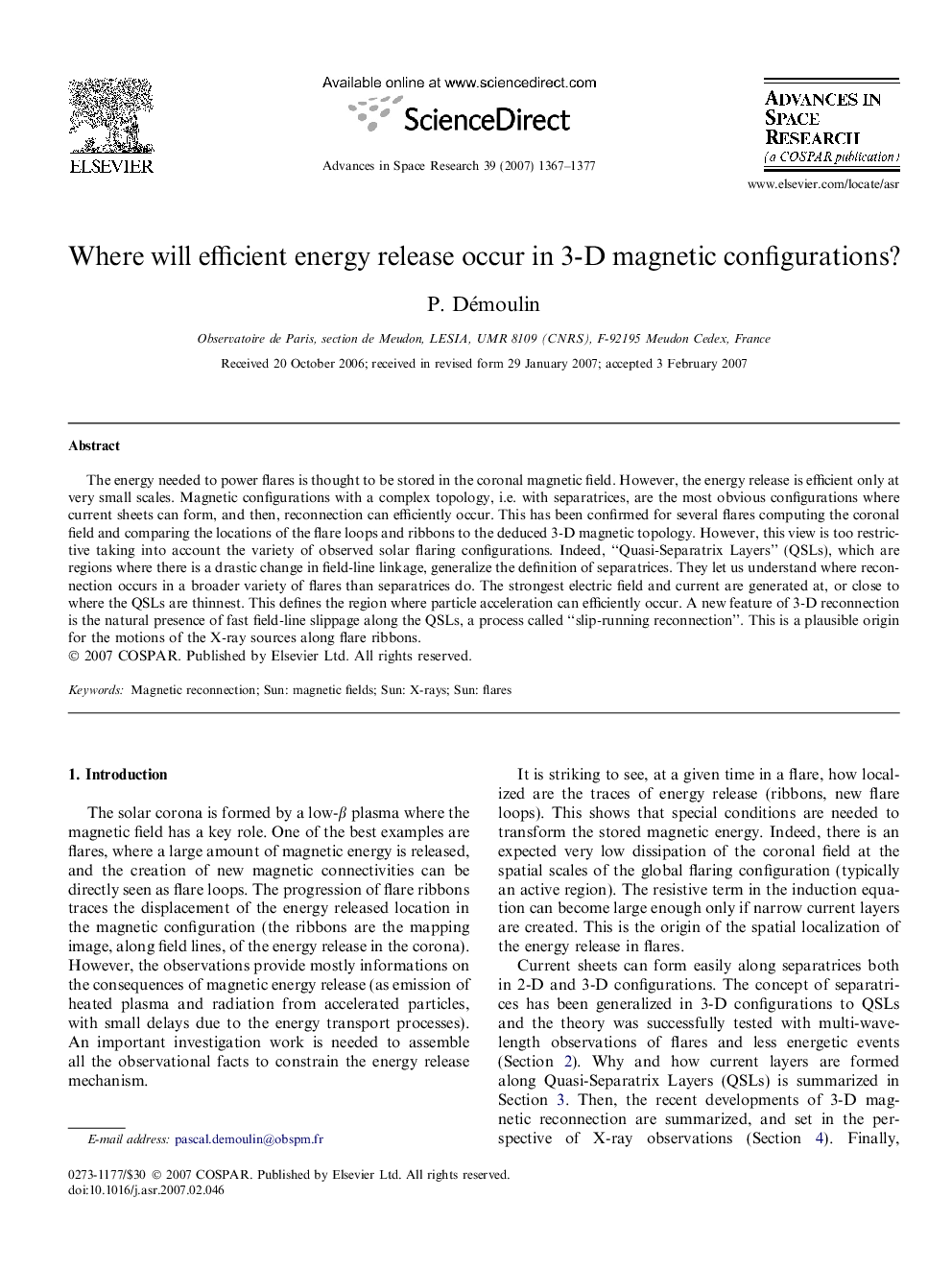| Article ID | Journal | Published Year | Pages | File Type |
|---|---|---|---|---|
| 1768959 | Advances in Space Research | 2007 | 11 Pages |
Abstract
The energy needed to power flares is thought to be stored in the coronal magnetic field. However, the energy release is efficient only at very small scales. Magnetic configurations with a complex topology, i.e. with separatrices, are the most obvious configurations where current sheets can form, and then, reconnection can efficiently occur. This has been confirmed for several flares computing the coronal field and comparing the locations of the flare loops and ribbons to the deduced 3-D magnetic topology. However, this view is too restrictive taking into account the variety of observed solar flaring configurations. Indeed, “Quasi-Separatrix Layers” (QSLs), which are regions where there is a drastic change in field-line linkage, generalize the definition of separatrices. They let us understand where reconnection occurs in a broader variety of flares than separatrices do. The strongest electric field and current are generated at, or close to where the QSLs are thinnest. This defines the region where particle acceleration can efficiently occur. A new feature of 3-D reconnection is the natural presence of fast field-line slippage along the QSLs, a process called “slip-running reconnection”. This is a plausible origin for the motions of the X-ray sources along flare ribbons.
Related Topics
Physical Sciences and Engineering
Earth and Planetary Sciences
Space and Planetary Science
Authors
P. Démoulin,
